Farmers see how Pasture for Life dairying can be done
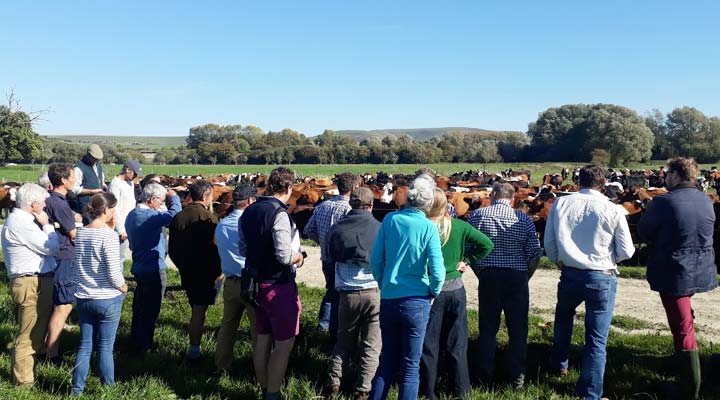
The visit was kindly hosted by Jonny and Rachael Rider of Horton House Farm in Wiltshire, who were involved in the PFLA’s pilot study which tested the Pasture for Life Dairy Standards.
The farm, which is organic, is rented from The Crown Estate and has been a grazing farm for a long time, with Jonny’s father twice travelling to New Zealand by boat in the 1950s, to bring back ideas to apply at home.
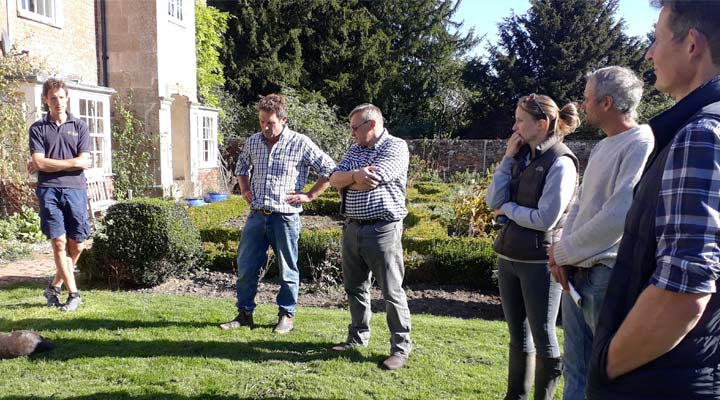
Jonny referred to André Voisin’s book ‘Grass Productivity’ as a vital companion to their approach to grassland management.
“We continue to fine-tune the way we do things, learning from the past and having an open mind to innovation,” he said.
The farm has fed no concentrates to any cows for 12 years. Jonny and Rachael were really pleased to help develop the Pasture for Life Dairy Standards in recognition of the product they produce. They are very encouraged that trials are underway for cheese made from their milk and hope this will be the start of a new and significant market.
Four hundred cows are calved a year to coincide with school holidays, as help from the family is essential. For every three cows that calve, two are milked through the parlour and the remainder, usually older, less productive cows, become nurse cows for all the off-spring. These are run as a suckler herd.
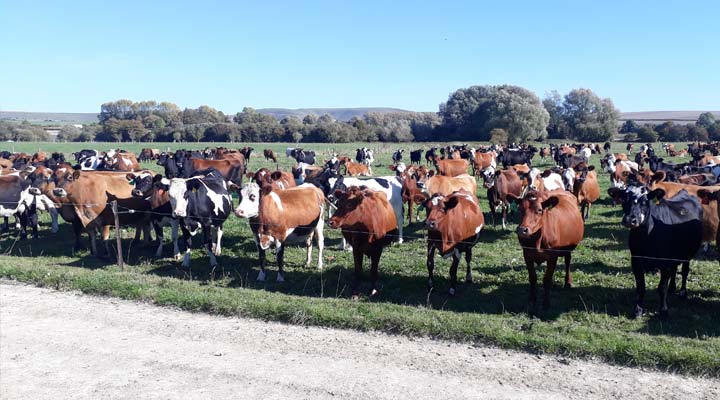
The Riders have been operating once-a-day (OAD) milking for 20 seasons, and dry the cows off for three months a year. The cows are under less pressure this way and are able to walk longer distances and live longer. No antibiotics have been used for mastitis for ten years.
Average yields are approximately 3,000 litres/cow/year. The Riders are paid on milk constituents with fat averaging 5% and protein 4%, thus providing a reasonable return, particularly as their feed costs are so low.
Maximising grazing
The farm is managed to maximise grazing with no silage made on the milking platform and the cows out for as long as possible. This year’s dry weather has been a challenge, but careful monitoring and slowing the rotation of paddocks, has ensured at least some fresh grass in front of the cows every day.
Part of building resilience against any extreme weather is to increase the sward diversity. At Horton House farm chicory and ribwort plantain are being slowly introduced as these are both deep rooting. They have kept growing and provided forage with a high mineral content all through the dry summer.
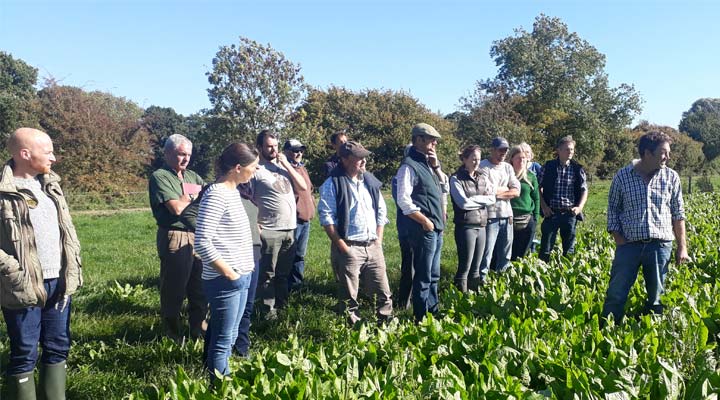
To establish herbal leys on an organic farm is a challenge so Jonny has used pigs to ‘plough’ the pastures and then direct drilled herbs into the cultivated soil.
Cocksfoot is regularly used in the pastures too. Unlike ryegrass, which only ever has three live leaves, it keeps producing leaves throughout the year and feeds well during the winter months.
Seven kilometres of hedgerows have been planted on the farm to provide further nutrient value and some shelter for the cows on the shoulders of the grazing season. Species include willow, hawthorn and hazel, and they are regularly browsed by the cattle.
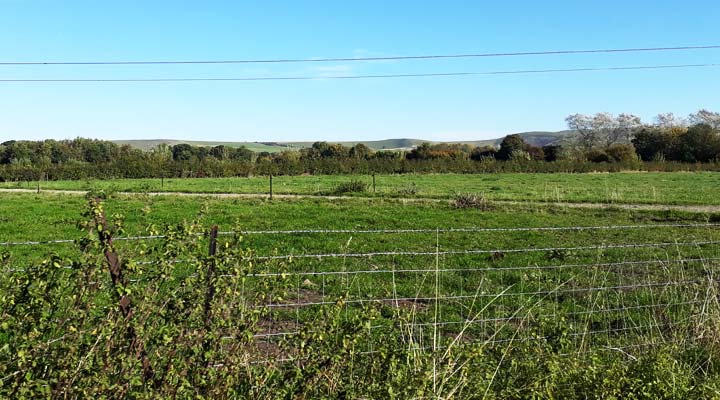
Jonny used to measure grass growth with a platemeter but is now more comfortable doing it by eye and observing cow performance. He believes it is most interesting to see what is happening two to three weeks after grazing and how quickly regrowth is happening.
He makes two tours of the farm every week and this year has seen a late flush of grass bringing total forage produced almost back to normal levels. The main milking herd makes six passes across the milking platform in any season and the cows are expected to consume 9-10 tonnes of dry matter per hectare per year.
Breeds
There is a broad range of breeds in the herd, mostly the result of experimenting with different genetics from around the world. The aim is to develop fertile animals which are good converters of grass to milk. Jonny noted that Jersey genetics tended to make the subsequent cheese too soft for their milk buyer, so has stuck to a core of New Zealand Friesians, with some Ayrshire, Norwegian Red and Montebeliarde.
The latter genetics were sourced from France, from farmers supplying cheese contracts from cows on only grass and forage diets, thus making them ideally suited to the Rider’s setup.
Heifers are calved at 24 months, and between 50 and 70 cows are artificially inseminated each year, based on preferred selection and the farm’s breeding programme.
Sixteen bulls bred on farm are run with the cows in a tight mating season.
Consideration is given to the end market for the bull calves as the Pasture for Life Standards do not allow calves to be euthanised at birth. Some experimentation is being done with beef breeds.
Veterinary support
The farm’s vet Ed Bailey from George Farm Vets, also attended the farm visit and gave some useful insight into how herd health is managed.
He noted how much he had learnt from the Riders about animal behaviour and how the right system run with patience and care, can be used to treat most issues. In particular, rotational grazing and once-a-day milking works well to reduce incidence of Johne’s disease and mastitis, and antibiotic use on the farm is negligible. Vet and med costs are less than half that of industry averages per litre of milk produced.
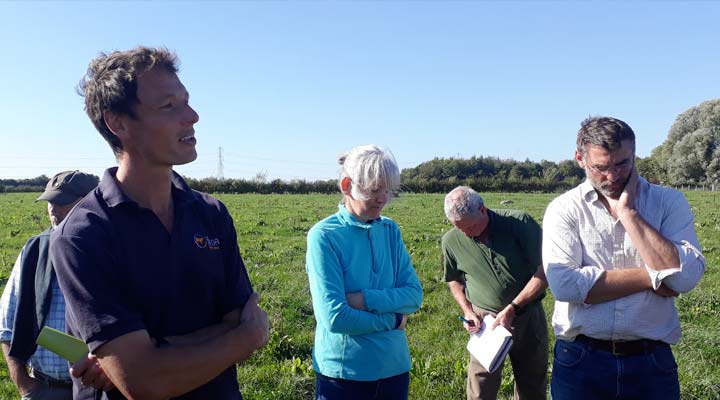
Nurse cows
A separate suckler herd rears all calves born on the farm, with three to four calves nursed by each cow. Although a difficult job to ensure all calves are suckling initially, it works very well as a system for breeding replacements and saleable animals. Jonny finds that the calves learn a lot from their mothers about grazing and get used to being handled, meaning they remain good tempered later in life.
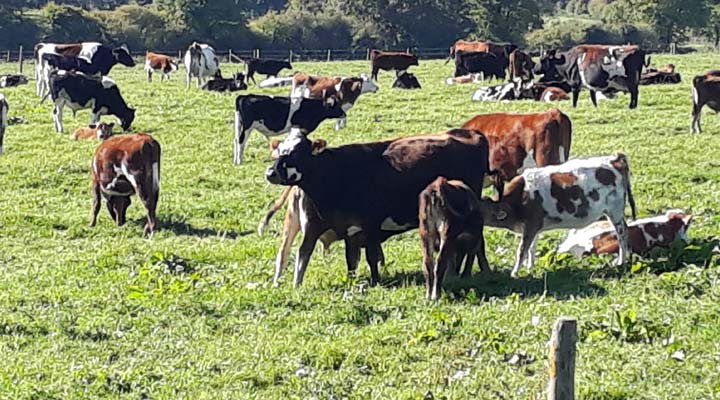
The nurse cows can be up to 12 years old, so they can spend several years being retired from the milking herd. Some of the bull calves reared will be sold for breeding, and the Riders are also exploring a new initiative led by a group of PFLA members to market Pasture for Life veal. Heifer calves will generally be used for replacements.
Anyone interested in finding out more about becoming Pasture for Life certified and assisting with supply of certified milk can get in touch with the PFLA office via milk@pfla.org.uk



